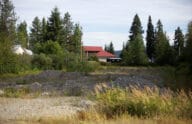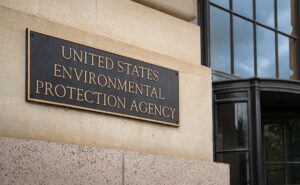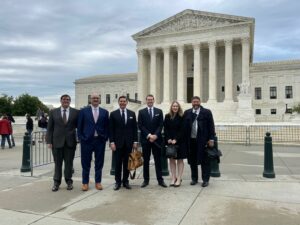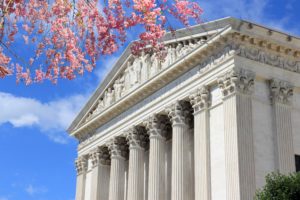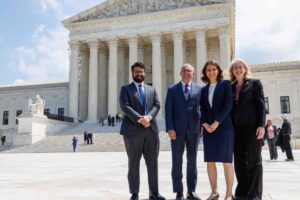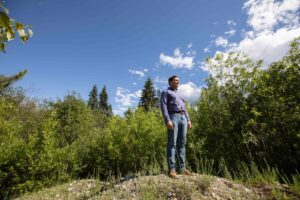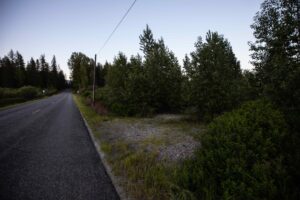Fighting EPA overreach at the Supreme Court in Sackett v. EPA
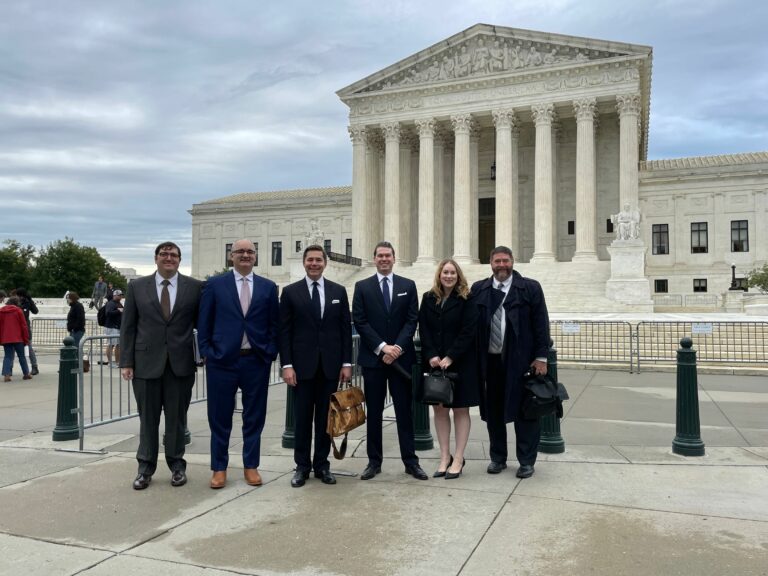
On the morning of October 3, 2022, I argued Sackett v. EPA II at the Supreme Court. It was the opening case of the Court’s new term.
An element of theater
I’ve argued at the Supreme Court only one other time previously—a decade ago, in this same case (Sackett v. EPA I). But even attorneys who appear regularly before the Court are awed by the experience. Before arguments began, I spoke to the petitioner’s counsel in the case immediately following ours. He’s a former U.S. solicitor general at the Department of Justice and has argued dozens of cases at the Supreme Court. He told me he still gets nervous every time. That’s the nature of the institution.
I had a hard time sleeping the night before. By the time I arrived at Court, a line of hopeful spectators had formed outside in the cold, trying to get one of the limited seats inside. Some of the spectators had been waiting since midnight.
Nothing—no federal appellate court—is like the experience of arguing at the Supreme Court. The lectern where you stand is remarkably close to the bench where the Justices sit. The bench curves around you so you can’t look at all nine Justices at once.
There’s an element of theater to it. When the Court’s ready to begin, a red velvet curtain pulls back and a bell sounds. The marshal raps the gavel. That moment is, I imagine, close to what high-level athletes, musicians, and actors experience at the start of a performance. As an attorney, your opening statement is almost like a soliloquy.
Except a soliloquy isn’t interrupted by questions.
What we learned from the Justices’ questions
Oral arguments are scheduled to last an hour, with each side given 30 minutes.
Instead, it lasted almost two hours.
Here are a few things I took away from the Justices’ many questions:
None of the Justices seem satisfied with the status quo. Even Justices who took issue with parts of our argument didn’t defend Justice Anthony Kennedy’s significant nexus test for whether a wetland falls under the EPA’s Clean Water Act (CWA) authority.
That said, there also wasn’t much support for Justice Antonin Scalia’s (superior) test laid out in his Rapanos opinion, which says a wetland must have a continuous surface connection with a “water of the United States” to be regulable under the CWA. Justice Brett Kavanaugh and Justice Amy Comey Barrett, in particular, seemed concerned about the Scalia test. I was surprised by the lack of interest in simply adopting the Scalia test as-is, given how much respect most Justices have for Justice Scalia and the fact that three of the Justices currently on the Court signed Justice Scalia’s opinion in 2006.
Justice Elena Kagan asked me point-blank about the possibility of a third test—not significant nexus or Justice Scalia’s test. She referred to it as something “in the middle.”
This is what many of the Justices, including Justice Kavanaugh, were driving toward in their questions: a third test based on adjacency. Several of the Justices asked about a section of the CWA that was added in 1977 amendments—1344(g) of U.S. Code or 404(g) of the CWA—which mentions “wetlands adjacent” to navigable waters. Justice Kagan suggested that line “means more than you think it means.”
In the week leading up to oral arguments, we did three (excellent) moot courts to prep for oral arguments. One of the participants brought up this same section of the CWA, so I was prepared to answer the Justices’ questions.
But I was surprised by how many Justices brought it up. That section was added five years after the CWA was passed, and the EPA largely focused its own arguments elsewhere.
Textualist Justices were searching for something in the text of the CWA on which to form a “third test” that’s more environmentally sensitive than the Scalia test, and they zeroed in on this brief mention of wetlands. And that’s why so much of oral arguments was spent discussing the definition of “adjacent.” It’s the only textual evidence the agencies have. (We debated the meaning of adjacent for so long that at one point Justice Clarence Thomas said, “I don’t want to use the term ‘adjacent.’ I’m done with that word.”)
Justice Neil Gorsuch spoke about the geography of the Sackett lot, which was a good sign. He referred to the EPA’s “adjacency theory” as “kind of a daisy wheel spun out from the lake,” because the EPA isn’t arguing the lot is adjacent to the lake, but rather that it’s adjacent to a ditch north of the lot, which empties into a creek several thousand feet west of the site, which then eventually empties into Priest Lake to the south. “That’s rather complicated when one looks at the map,” Justice Gorsuch (quite correctly) pointed out.
I also thought it was a good sign that Justice Barrett and Justice Thomas used examples from their hometowns—subsurface water in New Orleans for Justice Barrett, standing water in rural Georgia for Justice Thomas—when pressing the EPA’s counsel on how far the EPA’s view of the CWA extends. Does it mean that anyone who “built a backyard pool [in New Orleans] has to get a jurisdictional determination from the Corps before proceeding?” Justice Barrett asked.
In other words: There needs to be a limiting principle. The Justices had a hard time getting the EPA’s counsel to draw a bright line. “The agencies have told me they do not draw bright-line rules,” the counsel said at one point. Justice Gorsuch pressed him anyway, asking whether 3,000 feet or even three miles could qualify as adjacency. (“I don’t know the answer to that, Justice Gorsuch,” the EPA’s counsel said.)
Justices Kavanaugh and Gorsuch both seemed bothered by potential criminal penalties for CWA violations. In the Sacketts’ case, they didn’t face criminal sanctions, because they stopped construction when they got the EPA compliance order. But the Justices still seemed concerned about criminal penalties being on the table, because the same text at issue here—“waters of the United States”—is just as relevant to CWA criminal prosecutions.
One surprise came from Justice Kavanaugh: He asked why the Court shouldn’t stick with how “every administration since 1977” has interpreted the CWA. Here’s why: Justice Scalia wrote eloquently about the “damage done to our separation-of-powers jurisprudence” when the Supreme Court embraces “the adverse-possession theory of executive power.” In other words, just because the EPA has been misinterpreting its authority for decades doesn’t mean the Court should endorse its misinterpretation.
Waiting for the decision
If the decision were unanimous, it could come very quickly—as early as December. But it’s unlikely to be a unanimous decision. (If we did get a unanimous decision for the Sacketts, it would probably be very narrow and wouldn’t solve the larger problem.) We’ll likely have to wait until spring for a decision.
Ultimately, this case is a battle of different versions of textualism: our idea of textualism versus a different kind of textualism that has become prevalent on the left—a textualism informed by purpose.
It’s difficult to guess what answer the Court will give to the question of regulable wetlands, because so many Justices seemed inclined to develop a new test. Chief Justice Roberts and Justices Thomas and Samuel Alito signed Justice Scalia’s Rapanos opinion in 2006. I think they’re still by-and-large in agreement with that opinion. But Justices Kavanaugh and Barrett seemed more skeptical.
There’s been some hysterical characterizations of this case among environmentalist groups, some of whom held a (poorly attended) rally outside the Supreme Court on Monday. They’ve said a decision for the Sacketts will open up waterways to pollution. But that’s not what Sackett v. EPA is about. This is about what the federal government is allowed to control versus the states. However the Court rules, it won’t have an effect on water quality. We’re talking about the federal government preventing housing on land that is otherwise buildable. The EPA shouldn’t be acting as a zoning administrator. The CWA doesn’t allow it to act that way.
The Clean Water Act is a law that can sweep very broadly. It’s hard to know whether you’re regulated, and if you guess wrong—for doing otherwise-normal activity, like building a house—it can be catastrophic. And there aren’t very many statutes out there, thankfully, that have that potent brew of huge penalties, lack of notice, and the potential to regulate very normal, everyday conduct. That makes it very scary.
If we win, that’ll be gratifying—because that will show that, by being involved in this case since 2008, Pacific Legal Foundation was able to protect the rights of property owners across the country.



